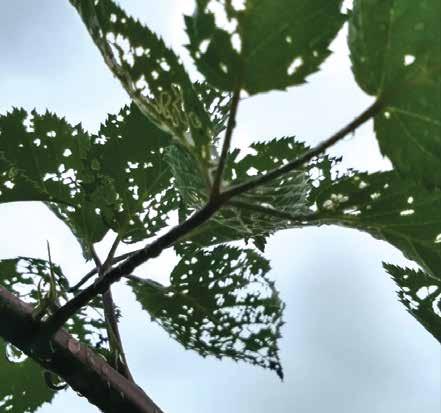
6 minute read
Kids Ask Dr. Bug
about the curious things found in the garden
I found a beetle. Can you tell me what it is so I can feed it? (See images “A”) Zella, 8
This looks like a white-margined burrower bug (a true bug, although it looks similar to a beetle). This tiny (~1/4 inch) beetle feeds on seeds, such as those of wildflowers and especially nettle and mint. Usually, folks don’t see many of these bugs in a garden, but occasionally there can be hundreds or thousands. This year, I’ve received a few reports of these beetles and found many in my own garden as well. This insect is interesting as most insects are solitary and do not provide care to their offspring once the eggs are laid. This bug is different – once the eggs are laid in the ground, the momma bug stays for a while to protect the eggs and brings food for the new hatchlings for the first few days.
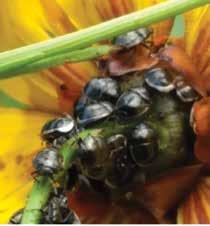
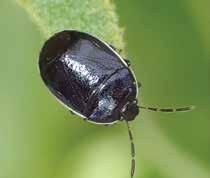
How do ladybugs fly with their hard wings? Russell, 9
The bright red, spotted wings you see when ladybugs are crawling on a plant are hard, outer wings, also known as elytra, that protect the soft transparent wings tucked underneath. It is a fascinating process to see how ladybugs, as well as many other beetles, fold and unfold these much larger wings under their elytra. Sometimes, they even use their abdomen to help tuck their flying wings under the elytra. This link (https://bit.ly/wingfolding, or scan the QR code) shows the intricate folding and unfolding process in slow motion.
These leaves are so pretty! How do they get this way? (See image “B”) Maggie, 9
These leaves are victims of Japanese beetles. These beautiful, shiny bronze and emerald-green beetles have a voracious appetite for the fleshy parts, but not the veins, of leaves. What is left after beetles feed is a skeletonized leaf which is pretty, but not so good for the plant as plants need the whole leaf to produce food to survive. Japanese beetles are a new-ish pest in the U.S. They are called invasive insects as they came from far away, cause problems, and don’t have many natural predators. They are well adapted to our area where they thrive and eat all the leaves of many trees and other plants. Fortunately, the adult beetles are only active about six to eight weeks of the year and, if plants are healthy, they can usually grow new leaves. A good way to control these beetles is to collect them in a container with soapy water. It’s best to do this each morning because the beetles release a pheromone to attract more beetles throughout the day. Also, a natural predator of Japanese beetle, the tiny Tiphia wasp, has made its way to Missouri and will help keep this pest in check. Don’t worry, this wasp won’t hurt you and is so small, you probably won’t even see it.
A
A
How do insects stay cool when it is so hot outside? Chris, 17
Insects are cold-blooded so their body temperature can change based on the temperature outside. When it is very hot, water becomes very important, and many insects will seek out moisture. Water helps insects regulate their temperature and environment. Insects may seek moisture from plants, soil, and your house. Some insects create environments that regulate the temperature within their colony or nest. For example, on hot days honey bees will collect water and “spit” it in their hive, while other bees fan their wings to create an air current. This causes the water to evaporate and reduce the temperature in the hive. Termites also control the temperature in their nests by keeping it moist and underground, and some species even create vents to allow airflow. Some insects move in with us to live in our air-conditioned homes, although for most insects it is too dry indoors. Some grounddwelling insects just go deeper where the temperature stays cooler and the soil is wet. Some insects are less active during the hottest hours and are more active in the morning and evening when it is cooler. And finally, many insects are not bothered by these hot temperatures as this is their “normal.”
Do you have questions for Dr. Bug? Send them to ReallT@ Missouri.edu or bit.ly/KidsAskDrBug. Please include your name and age. To help me learn what you learn from this column, please consider filling out this survey: bit.ly/KidsAskDrBugSurvey. Thank you!
TAMRA REALL Horticulture Specialist
Dr. Tamra Reall (@MUExtBugN Garden) is the horticulture specialist for MU Extension in Jackson County. For free, research-based gardening tips, call 816-833-TREE (8733), email mggkc.hotline@gmail.com, or visit www.extension2.missouri.edu.
Accept only Original Earth Right products for the health & beauty of your lawn & garden.®
PREPARE THE SOIL FOR OVERSEEDING BY USING EARTH RIGHT NOW!
Covers 10,000 SQ FT
Plants can uptake nutrients and water better. Deeper roots promote cooler turf and plants.
DON’T BE FOOLED BY PRODUCTS THAT CLAIM TO GIVE YOU
THE SAME RESULTS AS EARTH RIGHT PRODUCTS. For 20 years we have brought you time tested products that work in the Kansas City area. Read the labels, compare ingredients & the size of the area the product can cover. Our products are naturally based and work with Mother Nature. Earth Right Super Stuff® contains beneficial bacteria that continue to break up clay and turn minerals into food for turf and plants. Mushroom Stuff® contains beneficial mycelium that feed all the organisms that live on the roots. The natural symbiotic nature of this combination gives everyone a HEALTHY lawn and landscape.
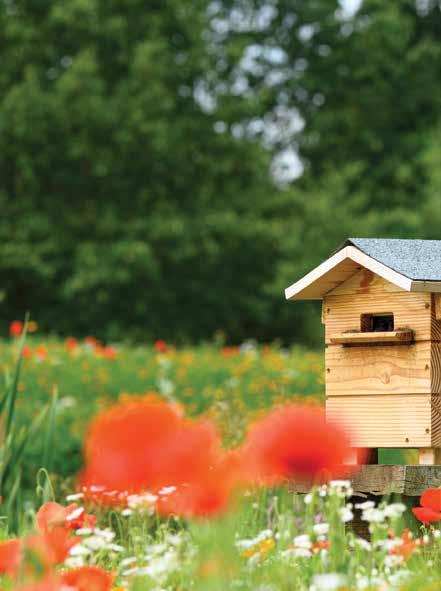
Establish, Improve & Restore Root Structure Increase Root Mass & Bud Production Improve Nutrient Transport Function
Root Starter and Enhancer
Covers 20,000 SQ FT
NATURAL OR 6-7-6 KEEP SOIL LOOSE and DON’T BURN THE ROOTS! Summer & Pet Safe
Turf, Herbs, Veggies, Flowers Roses, Trees, Perennials, Shrubs Gardens - Landscape - Containers Covers 10,000 SQ FT
Need Help? Tobin Lawn & Landscape (816-765-5565) or Big Green Turf Management (816-600-4936) Earth Right 913-492-2992 - superlawnstuff.com
© 2020 Earth Right
MADE IN THE HEARTLAND!
MAKE YOUR GREEN SPACE SHINE
Create a green space perfect for relaxing and entertaining.
Barbeques, outdoor gatherings, and at-home relaxation are just a few of our favorite things about summer. Get your green space summertime-ready with our tree and shrub care services.
Full Service Tree Care | Plant Health Care Pruning | Tree Fertilization | Consultations Kansas City | 913-213-3800 The Davey Tree Expert Company | davey.com
The Water Garden Society of Greater Kansas City Presents Puddle Jumping Water Garden Tour 2021
28th Annual Tour, Don’t Miss the 3 remaining Saturdays
Plan your personal driving Water Garden Tour on Saturdays from 9 a.m. to 5 p.m., highlighting locations around the entire metro including Lawrence, KS. A new feature for 2021 is the addition of unique builder-sponsored garden parties from 6 to 10 p.m. with lite refreshments and night lighting for a magical view of Water Gardens.
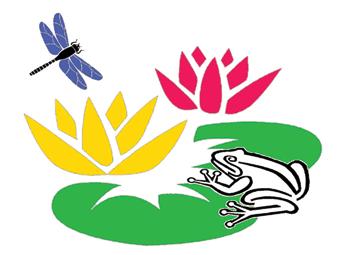
Tours are on the following Saturdays from 9 a.m. to 5 p.m. Rain or Shine
Tour # 4 August 7, Southern Johnson County, KS Tour # 5 August 21, Lawrence, KS Tour # 6 September 11, Northern KCMO, Wyandotte County, KS and Leavenworth, KS
Tickets are $20 for a season pass for all 6 Water Garden Tours and $5 for individual tours. Children under 14 attend free. Proceeds benefit the building and maintenance of restorative and educational water gardens for schools, nature centers and other non-profits. Treat yourself to a summer of beauty and fun! Purchase tickets NOW through Eventbrite by visiting kcwatergardens.com/tour.







